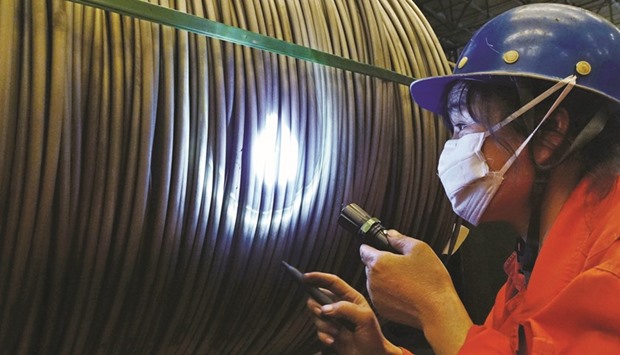World leaders gathering in China for the Group of 20 meeting this weekend aren’t likely to hear much good news on steel. The host nation’s progress in tackling overcapacity in its industry is piecemeal at best, with little hope of progress this decade, according to Macquarie Group Ltd.
“There’s certainly plenty of talk but in terms of underlying, true rationalisation of the industry, we still believe any progress on that will go very, very slowly,” Ian Roper, the bank’s Singapore-based analyst said in a phone interview. “There will not be any capacity constraints on steel supply up to 2020, and we think there will be a lot more lip service to come.”
The global flood of Chinese steel is stoking trade tensions with nations from India to Europe, and US lawmakers have asked President Barack Obama to raise the oversupply issue with his hosts at the G-20 meeting in Hangzhou in eastern China. President Xi Jinping has ordered as much as 150mn metric tonnes, or about 13%, of annual capacity to shut by 2020 as part of the Communist Party’s plans to address industrial overcapacity amid slowing demand for basic materials. China makes about half of the world’s steel.
While official figures demonstrate that China shut more than 21mn tonnes of capacity in the first half, a detailed look shows that includes plants that haven’t operated in many years, Roper said. “We’re still of the belief that things that are being, in inverted commas, ‘closed’ are not real, effective capacity,” said Roper, who used to work for Rio Tinto Group in Shanghai.
Overseas sales increased 5.8% on-year to 10.3mn metric tonnes in July, according to China’s customs administration. Exports in the first seven months expanded 8.5% to 67.4mn tonnes, a record volume for the period. That’s in line with what South Korea, the world’s sixth-largest producer in 2015, makes in an entire year.
President Obama should discuss China’s “illegal trading practices” and the “growing global steel overcapacity crisis” at the G-20 meeting, Tim Murphy and Peter Visclosky, chairman and vice chairman of the US Congressional Steel Caucus, said in a statement. Less accusation and more global cooperation on overcapacity is needed, China’s Vice Finance Minister Zhu Guangyao said in Hangzhou. China was the first among major economies to take action on industrial overcapacity, Zhu said.
The industry in China rebounded this year after China boosted credit and spent more on infrastructure. Benchmark steel prices surged 31% in the first half, resuscitating mills’ profits and helping to underpin a recovery in iron ore, which has rallied 35% in 2016. Margins at Chinese producers swung from deeply negative in November to the best since 2009 in April as steel output and exports climbed to records.
“For steel, most of the recovery in prices and margins is driven by stimulus, and mills lack confidence, so no-one is really flooding the market,” Roper said. In the first seven months, China produced 466.5mn tonnes, 0.5% less than a year ago. Macquarie’s view chimes with Hesteel Co, the listed unit of China’s biggest state-owned mill, and Baoshan Iron & Steel Co Ltd, China’s second-biggest mill, which both delivered gloomy outlooks for steel markets earlier this week despite better performances in the first half. “While margins might not go back to the terrible lows we saw in the fourth quarter of last year, we don’t see structural reasons for the steel industry to be making good margins going forward,” Roper said. Earlier this year, a group of 25 nations, including the US, said they were unable to persuade China to take greater accountability for the overcapacity in steel production. Donald Trump, the Republican nominee for US president, vowed his administration would ensure “American steel for American infrastructure” in a June speech outside of Pittsburgh.

A worker verifies a product at a steel factory in Dalian, Liaoning province. The global flood of Chinese steel is stoking trade tensions with nations from India to Europe, and US lawmakers have asked President Barack Obama to raise the oversupply issue with his hosts at the G-20 meeting in Hangzhou in eastern China.
